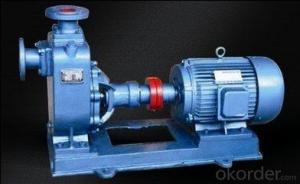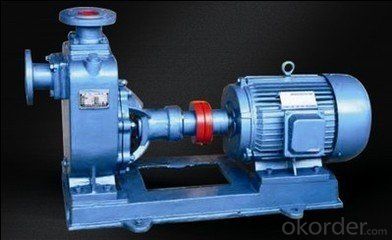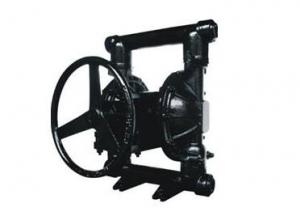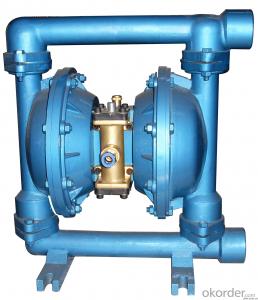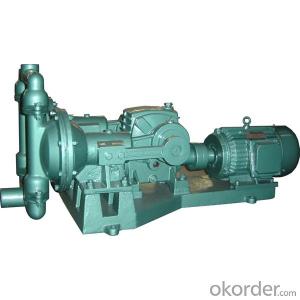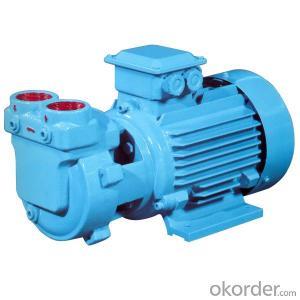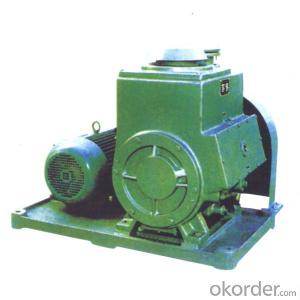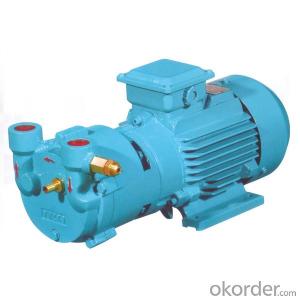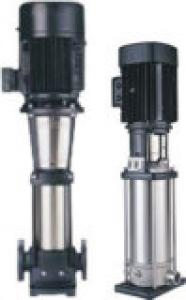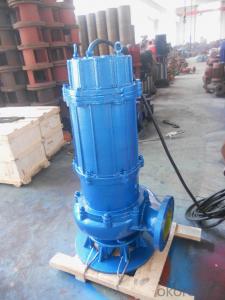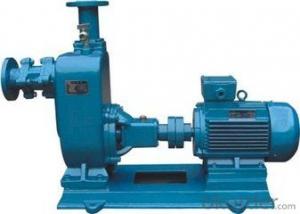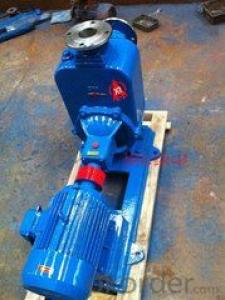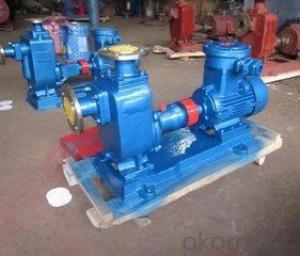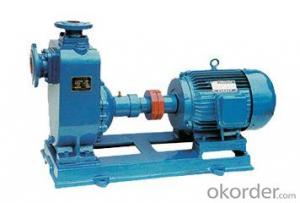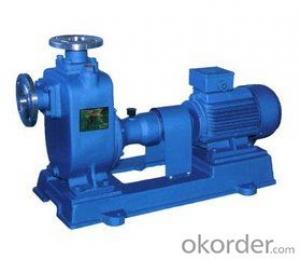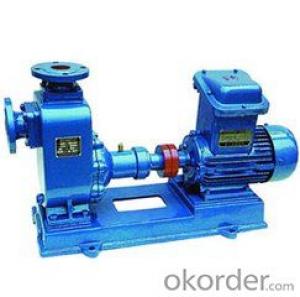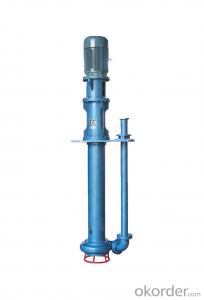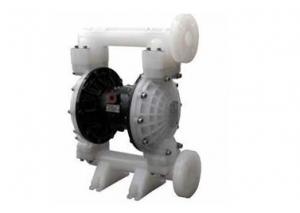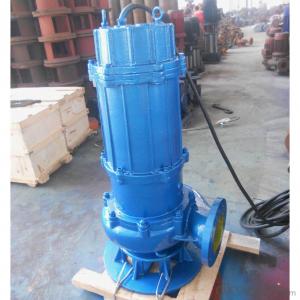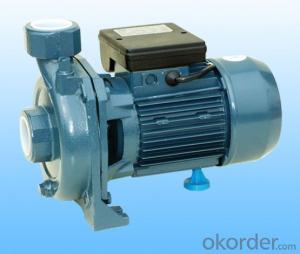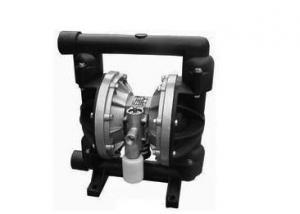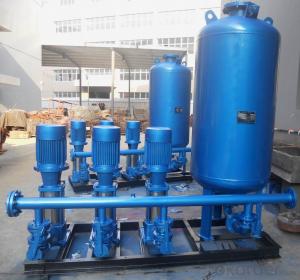ZX series self-priming pump 50ZX- 15 -20
- Loading Port:
- Shanghai
- Payment Terms:
- TT OR LC
- Min Order Qty:
- 10 unit
- Supply Capability:
- 300 unit/month
OKorder Service Pledge
OKorder Financial Service
You Might Also Like
A, product overview
This company produces the ZX series self-priming pump is the earliest according to relevant technical data at home and abroad after absorption, digestion, improve the development of pump energy saving products.Self-priming centrifugal pump, the pump and other pump does not have the self-priming capacity, etc.Such as corrosion resistant mechanical seals and stainless steel material can call some of the chemical, pharmaceutical acid and alkali medium.
Second, the product features
1, the pump with self-priming function, do not need to install the bottom valve in pipeline, only to ensure storage in pump body before work are quantitative liquid can have "a drainage, life-long self-priming" function.So both simplifies the pipeline system, and improved the working conditions.
2, has a compact structure, convenient operation, stable operation, easy maintenance, high efficiency, long service life.
Three, use the product
1) suitable for urban environmental protection, construction, fire control, chemical, pharmaceutical, dyes, and dyeing, brewing, electric power, electroplating, papermaking, oil, mining, equipment cooling, tanker unloading, etc.
(2) apply Yu Qingshui, sea water, chemical liquid medium with acid, alkalinity and with general mushy slurry (medium viscosity 100 mile, or less under the solid content of 30%).
(3) mount a rocker arm sprayer, the water can go into the air, a small drips to spray, is a good tool for farm, nursery, garden, tea garden.
And (4) can be matched with pressure filter of any model and specifications, sending size belt filter to filter the most ideal auxiliary pump.
Fourth, working conditions
Traffic: 3 ~ 500 m3 / h
Head: 10 ~ 80 m
Ambient temperature 50 ℃ or less
Medium temperature is 100 ℃ or less
Medium density of 1.24 or less by 103 kg/m3
- Q: Can an air pump be used for inflating balloons with different sizes?
- Yes, an air pump can be used for inflating balloons of different sizes. The pump usually comes with various nozzle attachments that can accommodate different balloon sizes, allowing for easy and efficient inflation.
- Q: General pump can be used in the model airbrush on?
- You certainly need airbrush spray pump, the general set down a cheaper enough three hundred or four hundred;There is a water filling (county official), have 40ml installed, generally not more than 40, you can buy online 20+, this is the need to dilute with airbrush spray, spray cans as well as ready-made, but not cost-effective, to almost double. Another is the paint (Tamiya, county official, Gaia), are the mainstream brands, have oily water on the points, then this is not elaborate, price 20- a bottle, also need to use dilution. The following is the main floor of thinner, thinner, the brand must be the same, especially Tamiya county official two, each other are insoluble, as for domestic can use, but the scope is very small, but thinner is not expensive, about 20 of 110ml, 250ml 50, 400ml sixty or seventy (Jun Shi). If you have a palette, you can sell the palette, but tell the landlord exactly how small the plate is. There is a cover tape, this is the color with time, like Tamiya, the other type of waterproof tape medical (translucent) effect is good, the price range of change with width of not more than 20 words, online.
- Q: What safety precautions should I take while using an air pump?
- To ensure your safety and avoid any accidents or injuries, it is crucial to take certain safety precautions when using an air pump. Here are some guidelines you should adhere to: 1. Familiarize yourself with the instructions: Begin by thoroughly reading and comprehending the user manual or instructions accompanying the air pump. This will provide you with essential information on how to operate the pump safely and efficiently. 2. Employ suitable protective equipment: Shield your eyes by wearing safety goggles or glasses to prevent any debris or particles from harming them during the pumping process. Additionally, wearing gloves is advisable to minimize the risk of hand injuries. 3. Inspect for any damage: Prior to using the air pump, carefully examine it for any indications of damage, such as cracked or frayed wires, loose components, or leaks. Refrain from utilizing a damaged pump, as it may pose a safety hazard. Instead, arrange for its repair or replacement. 4. Keep children and pets at a safe distance: Ensure that children and pets are kept away from the air pump while it is in operation. They may inadvertently interfere with the process or sustain injuries from the moving parts. 5. Utilize in a well-ventilated area: When using an air pump, make sure you are situated in a well-ventilated space to prevent inhalation of fumes or potentially harmful gases. If operating indoors, open windows or doors to facilitate the circulation of fresh air. 6. Avoid overloading the pump: Refrain from surpassing the recommended pressure limits of the air pump. Overloading can result in overheating or malfunctioning of the pump, leading to potential hazards. Adhere to the manufacturer's instructions regarding proper usage and pressure limits. 7. Choose appropriate power sources: Ensure that the air pump is connected to a correctly grounded electrical outlet or utilize the recommended power source. Using unsuitable extension cords or adapters for the pump's power requirements may cause electrical issues or damage the equipment. 8. Never leave unattended: It is imperative to never leave the air pump unattended while it is running. Always switch off and unplug the pump once you have finished using it. This will prevent any accidents or damage that could occur in your absence. 9. Store appropriately: After usage, store the air pump in a dry and secure location, away from moisture, extreme temperatures, or any other potential hazards. This will aid in preserving its functionality and prevent accidents caused by improper storage. By adhering to these safety precautions, you can confidently use an air pump and minimize the risks associated with its operation.
- Q: What is the maximum pressure limit of an air pump?
- Depending on the specific model and purpose of an air pump, its maximum pressure limit can vary. Generally, the maximum pressure limit of air pumps can range from a few PSI to several thousand PSI. For instance, when it comes to portable air pumps used for inflating tires or sports equipment, their maximum pressure limit is typically around 150 PSI. This level of pressure is usually sufficient for most everyday applications. However, in contrast, industrial air compressors utilized in manufacturing or construction have significantly higher maximum pressure limits. These compressors can achieve pressures of several thousand PSI, enabling them to power heavy machinery or operate pneumatic tools. To determine the precise maximum pressure limit of a particular air pump, it is crucial to refer to the manufacturer's specifications or user manual. Exceeding the maximum pressure limit of an air pump can lead to equipment damage, safety hazards, or even catastrophic failures.
- Q: What is the maximum depth an air pump can operate underwater?
- The maximum depth an air pump can operate underwater depends on various factors such as the specific model and design of the air pump, the quality of its construction, and the conditions of the water it is submerged in. In general, most standard air pumps are designed to operate at depths of up to around 6 to 8 feet (1.8 to 2.4 meters) underwater. However, some specialized air pumps, such as those used in deep-sea diving or industrial applications, are capable of operating at much greater depths, sometimes reaching several hundred feet or even thousands of feet underwater. It is important to consult the manufacturer's specifications and guidelines for the specific air pump you are using to determine its maximum operating depth.
- Q: What is the maximum depth an air pump can operate at underwater?
- The maximum depth an air pump can operate at underwater depends on several factors, including the type and quality of the air pump, as well as the pressure rating it can handle. Typically, most standard air pumps for aquariums can operate effectively at depths of up to 6 feet or 1.8 meters. However, there are specialized air pumps designed for deeper underwater applications, such as diving or industrial purposes, which can operate at depths of up to several hundred feet or more. It is important to consult the manufacturer's specifications and guidelines for the specific air pump in question to determine its maximum operating depth underwater.
- Q: I want to change the refrigerator compressor to the air pump and ask for the wiring method
- Who can think of it? Only professional can do it
- Q: Can an air pump be used for inflating inflatable pools with built-in waterfalls?
- Yes, an air pump can be used for inflating inflatable pools with built-in waterfalls. Air pumps are commonly used for inflating various types of inflatable objects, including pools. The built-in waterfalls in the pool do not affect the process of inflation, as they are separate components that are not connected to the inflation process. Therefore, an air pump can be used to quickly and efficiently inflate the pool, regardless of whether it has a built-in waterfall or not.
- Q: What is the maximum depth an air pump can work underwater?
- The depth at which an air pump can function underwater is influenced by various factors, including the pump's design, power, and quality. However, most air pumps are not specifically designed to be fully submerged in water. Instead, they are typically intended for use in shallow water or above the water surface to provide aeration or circulation. For standard aquarium air pumps, their operational capability is generally limited to a depth of approximately 3 to 4 feet underwater. Beyond this depth, the water pressure exceeds the pump's capacity to function effectively. Trying to use an air pump beyond its recommended depth may result in decreased air flow or even damage to the pump. If you require deeper underwater aeration, specialized submersible air pumps are available in the market. These pumps are designed to withstand higher pressures at greater depths. They often incorporate more durable materials, stronger motors, and enhanced sealing mechanisms to prevent water from entering the pump and causing internal damage. Depending on the specific model, these submersible air pumps can typically operate at depths ranging from 6 to 10 feet or even deeper. To ensure that you select an air pump suitable for your desired underwater depth, it is crucial to consult the manufacturer's specifications and guidelines. Additionally, regular maintenance and proper installation can help prolong the lifespan and effectiveness of the pump, ensuring optimal functioning at the specified depth.
- Q: What are the different speed control options available in air pumps?
- The different speed control options available in air pumps include manual adjustment knobs, variable speed controllers, and programmable timers.
Send your message to us
ZX series self-priming pump 50ZX- 15 -20
- Loading Port:
- Shanghai
- Payment Terms:
- TT OR LC
- Min Order Qty:
- 10 unit
- Supply Capability:
- 300 unit/month
OKorder Service Pledge
OKorder Financial Service
Similar products
Hot products
Hot Searches
